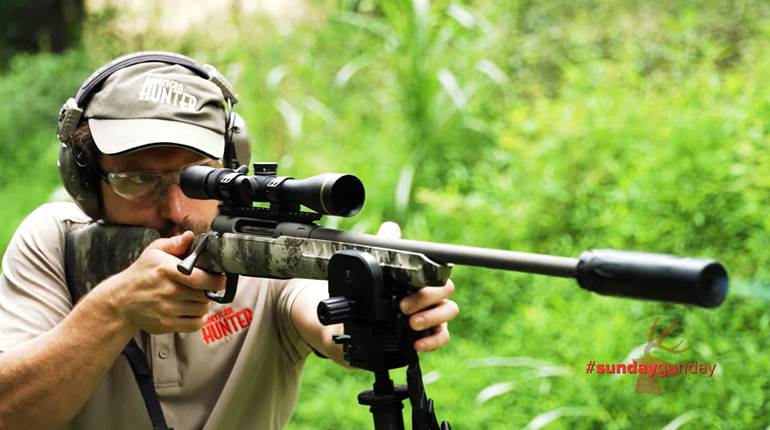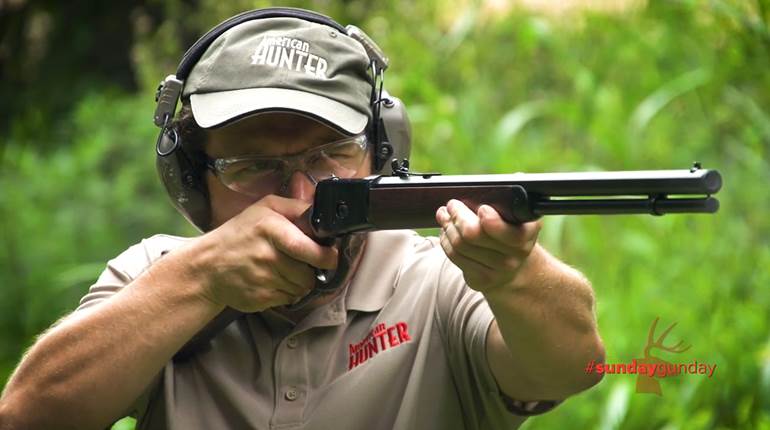The .45 ACP chambered submachine gun M3 was born of the necessities of a full national wartime mobilization. At peak production M3s were a bargain at $20.94 each, which is less than half the cost of the cheaper mass-production versions of the Thompson submachine gun. Although low cost was a major factor in the M3’s success, so too was the speed of its development and adoption.

The project went from a concept on paper, to a prototype designated the T20, to adoption and production within just seven months – a record that no other firearm in U.S. military history has ever challenged. When it went into production in May 1943 at General Motor’s Guide Lamp Division plant in Anderson, Ind., the M3 was a reliable open-bolt submachine gun weighing just over 8 lbs. with a fully loaded 30-round detachable box magazine.
Its design made extensive use of sheet-metal stampings to include the two halves of the receiver assembly, the trigger, the rear sight and a crank handle on the right side of the gun used to retract the bolt before firing. The M3’s sheet-metal construction made it lighter and gave it an appearance resembling an auto mechanics grease gun, a nickname that stuck.

However, sheet stampings also created one weakness that would soon reveal itself on the battlefield. On Tuesday, June 6, 1944, U.S. troops used the M3 “Grease Gun” in action for the first time. During the weeks that followed, it fought a vigorous campaign stretching from Normandy through to the liberation of Paris and the push to the Siegfried Line. Soldiers carried it up hill and down valley through the adversity of dust, rain and, eventually, even snow.
They were beat-up as the troops climbed on and off of trucks, half-tracks and tanks. While an M3 could survive being dropped on its left side without affecting its ability to function, dropping one on its right side was another matter entirely because that is where the weapon’s fragile sheet-metal retracting handle was mounted to the trigger housing assembly.

In the rush to develop and the adopt the Grease Gun, the weakness of that part was overlooked with the result that, when crank handles began to break in France after the D-Day, there was no prescribed method of repairing them and, more importantly, no spare parts to do the job. Even as the problem was beginning to present itself in combat, a product improvement was already in development back in the USA that would correct it. As early as April 1944, Guide Lamp was working on a modified version of the Grease Gun that was designated M3E1.

In addition to a number of other design refinements, the M3E1 featured the complete elimination of the M3’s crank handle assembly and its replacement with a simplified and indestructible finger hole in the bolt. Because of this simplification, retracting the bolt can be managed comfortably using just the shooter’s index finger - no crank handle necessary. On Dec. 21, 1944, the M3E1 was officially adopted as the .45-caliber submachine gun, M3A1 and with that all issues associated with the Grease Gun’s fragile crank handle were resolved once and for all.











![Winchester Comm[94]](/media/1mleusmd/winchester-comm-94.jpg?anchor=center&mode=crop&width=770&height=430&rnd=134090756537800000&quality=60)
![Winchester Comm[94]](/media/1mleusmd/winchester-comm-94.jpg?anchor=center&mode=crop&width=150&height=150&rnd=134090756537800000&quality=60)












